Improvised Pillows For Camping And The Outdoors.
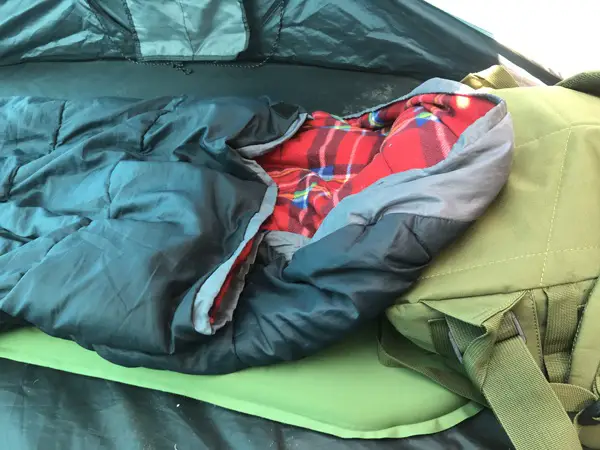
While the backpacking inflatable pillow doesn’t take up much room in our sleep system, sometimes we might forget to pack it. Or the inflatable pillow might get a puncture and go flat.
Perhaps we want to go ultralight, or no extra room in our pack and not take a pillow. Maybe we go with minimalistic camping, just rough it in the woods, smooth it with something else, or want to improvise and make do with what we have.
While some of these makeshift pillows won’t be as good as the five star accommodation pillow, or the favorite low allergy space age memory foam pillow, they get your head off the ground and give head support for a better nights sleep.
This is where the improvised pillows for camping come into play. Some of these ideas are for the pillow, or just the pillow case, others are for the stuffing material inside the pillow case.
Here are over ten ideas for improvised pillows.
1. Articles of clothing.
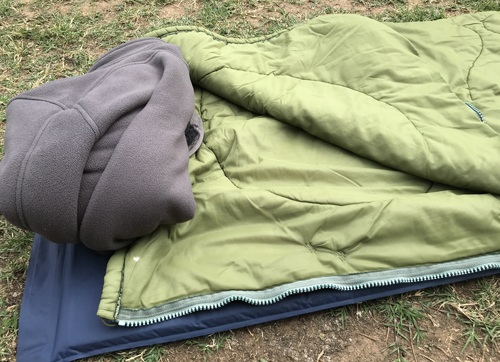
An article of clothing folded up forms a good makeshift pillow.
Fold up, or roll up a jacket, or jumper up to use as a pillow. If it is too small, tie the ends up of the jumper, place extra clothing inside it and tie the jumper up, so the other clothes don’t push out.
2. Backpack.
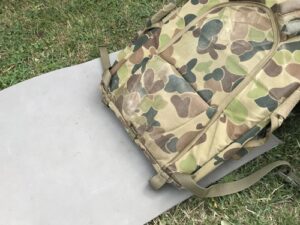
The lower back padded section, (Back panel.) on a lot of backpacks / day packs, makes for an ideal pillow. Remove any hard objects out of the pack, or place them to the top of the pack.
If the back panel is too hard, place some clothing on top.
Place your boots the other end of the backpack to angle it up if it is too low, or to stop the back pack from sliding away.
Some backpacks have removable foam padding for support. This can be taken out and used separately, or place on top of the back pack for a pillow.
3. Hiking Boots.
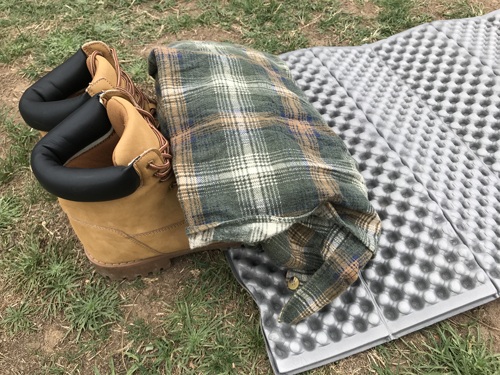
Yes, boots can be used for an improvised pillow. Place a jumper or clothing over the toe section of them for comfort. So the boots don’t continually move back and slip away, place an object behind them. I place mine in the top section hood of the bivvy bag with me.
If they are muddy, place the boots in a large dry bag or plastic bag. This also stop nasty biting insects like scorpions and spiders getting in the boots overnight.
4. Shemagh.
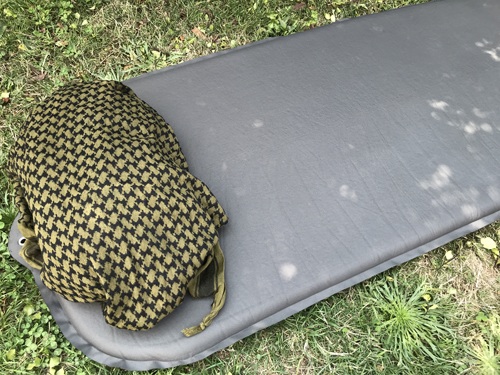
A Shemagh can be tied around some clothing. Lay the Shemagh open and place the spare clothing in the middle of it. Tie the four corners together of the Shemagh, then turn the parcel over and you have another comfortable pillow.
5. Foraging bag with natural materials for padding.
I normally carry a cotton bag, or old pillow case with me to collect wild edibles in. This also doubles up to use it for a storage bag for collecting dry tinder and kindling for future fire making.
The cotton bags are ideal for using natural materials in them for stuffing. Collect leaves, grasses, bracken fern, cattails, pine needles. Test it out first and ensure there are no pointy or hard bits in the sack.
Make sure no spiders, or insects are collected up with the debris. I normally tie the ends of the sack, so no inner materials push out.
(If 100% cotton, the bags can double up to make char cloth. Of course charring natural materials would be better than cutting up your foraging bags.)
A foraging bag has so many uses when camping or practicing bushcraft and survival skills.
6. Tent bag.
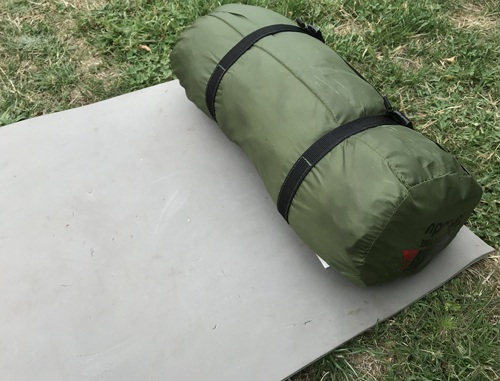
A tent bag, or pole bag for the campers, can be used to stuff clothing in.
If it is made out of a hard canvas material or plastic, place a softer article of clothing over it.
7. Animal skins.
While old school and primitive, the comfort level doesn’t have to be rough. Soft furs and hides folded over, or placed on another object make excellent pillows.
Some course hair animal hides are going to be prickly, smelly or rough though.
8. Dry bag.
Place some clothing inside the dry bag and use it for a pillow. Alternatively fill it with air or natural soft materials, like grasses and leaves, etc.
If you don’t like sleeping on the plastic material, place a Shemagh, or jumper over the plastic.
Here are some other bushcraft and outdoor uses for the dry bag.
9. Sleeping bag cover.
The sleeping bag cover is a good one to stuff clothes in for a pillow.
If it has compression straps on the outside, just turn it inside out.
10. Other items.
A larger waist bag (Bum bag or fanny pack.) can also be used as a pillow when camping. (With the Mora Garberg knife removed of course from the belt.)
For the kayaker, canoeist or boat fisherman, a life jacket or PFD (Personal Flotation Device.) can be used as a pillow. Dry of course.
A lot of times I will carry two water transpiration bags, (Clear large garbage bags.) these can be stuffed with clothing for a makeshift pillow.
For the car campers, camp chair bags, or gear bags are other options that could be used for the case. Large food storage bags can also stuffed and used as a pillow case.
A haversack or satchel can make another pillow.
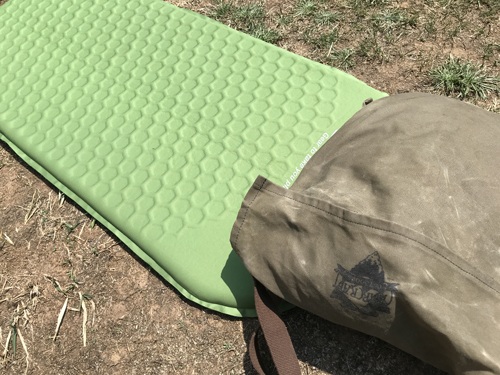
Above photo of the CampCraft Outdoors XL Haversack and sleeping mat.
Summary – Improvise, adapt and sleep well in the outdoors.
Some of these pillow ideas are obviously more comfortable than others, but we have to do with what we have available. Improvise, adapt and sleep better with thinking outside the box.
For some of the pillows that a have a rough, or plastic surface, an article of clothing over it may not be necessary. As a beanie, balaclava or hat worn, might be enough to soften it.
When camping, hiking or practicing bushcraft with an overnighter, hopefully these ideas will give you some head support and a better night sleep if you forget that comfy pillow.
